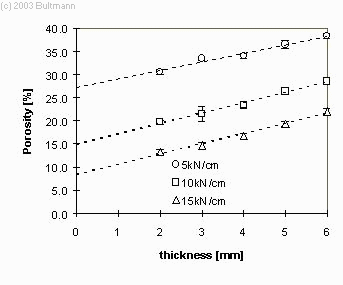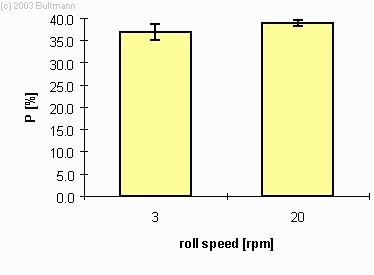 |
Bultmann's
Roll Compaction-site
on Dry Granulation |  |
|
|||

Figure: Key parameters of the roll compaction process


Figure: Porosity is mainly influenced by ribbon thickness and specific
compresion force (left), not by roll speed (right)
Thus the handling of a dry granulation system seems to be quite easy:
Force and gap have to be set and the process can be started.
There’s only one major obstacle: The gap can not be “set” directly;
it is the result of the amount of powder presented to the nip area, the
force and the roll speed (the amount of powder converted into a ribbon
and taken out of the rolls). Thus in order to obtain the desired gap size,
one has to control the auger speed instead.Force and auger speed are set
in order to obtain the desired porosity (the actual connection depends
on the powder’s compactability) while roll speed should be low. Auger speed should be very low to
stay on the safe side and force should be also in the lower region for
the same reason. If too much powder is conveyed to the nip area, the rolls
are moved to the side until the maximum possible gap size is reached and
machine stops itself to prevent hardware demage.
When the gap slowly opens and reaches a steady state, auger speed can be
adjusted in order to obtain the desired gap size. Then force should be set
to the desired value and automatic control can be activated.